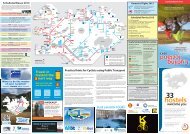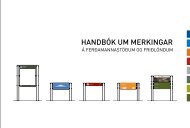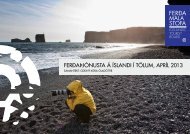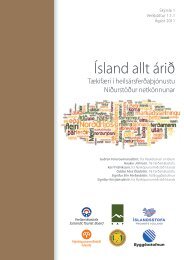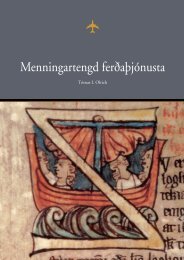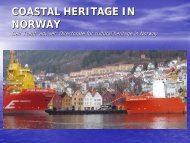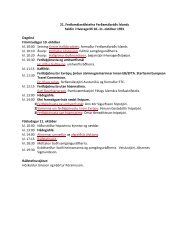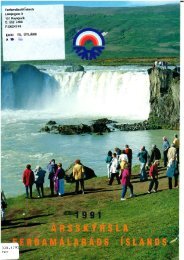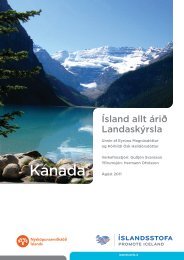Untitled
Untitled
Untitled
Create successful ePaper yourself
Turn your PDF publications into a flip-book with our unique Google optimized e-Paper software.
For tourism studies this means that future research will need to<br />
move beyond the paradigm of sustainable development and investigate<br />
relationships between tourism and climate change in terms of both<br />
adaption and mitigation (Simpson, Gössling, Scott, Hall and Gladin 2008).<br />
For example, what does a low carbon society imply for tourism mobilities?<br />
How might the discourse on climate change effect tourism imaginationings<br />
and trajectories of sustainability for tourism on the ground?<br />
Outline<br />
The report consists of five chapters. In the next chapter (2) we will<br />
introduce and explore in more detail two of the central concepts to be<br />
found in tourism studies: image and destination. In the chapter that follows<br />
(3), we will more formally address tourism theory and move towards<br />
issues of imaginationings. After that comes a chapter (4) were we will<br />
place tourism and tourists in both the social world and on the Earth. The<br />
final chapter (5) consists of a summing up in the form of some suggestive<br />
steps towards an earthly research agenda.<br />
As geographers we are simply bound to appreciate maps, especially<br />
because a map can provide a comprehensive spatial overview of the terrain<br />
one is about to travel through. An alternative, and admittedly a more<br />
complicated outline of the report in the form of a map thus looks like this: 7<br />
7 The map is inspired by Olsson’s (2007, pp. 225-235) Kantian Island of Truth, but here we in no way<br />
pretend to be approaching the truth of tourism. In accordance with our understanding of tourism and<br />
tourist imaginationings we believe that the capacity to imagine, to talk and reason about things that are<br />
not present, is a characteristic of human beings. Those humans we find on the Island of tourism and<br />
tourist imaginationings are thus also what Olsson describes as “a bastardous blend of semiotic and<br />
political animals, ironic creatures who after long practice have learned to live with the tensions between<br />
identity and difference without going crazy” (Olsson 2007, p. 225).<br />
9



